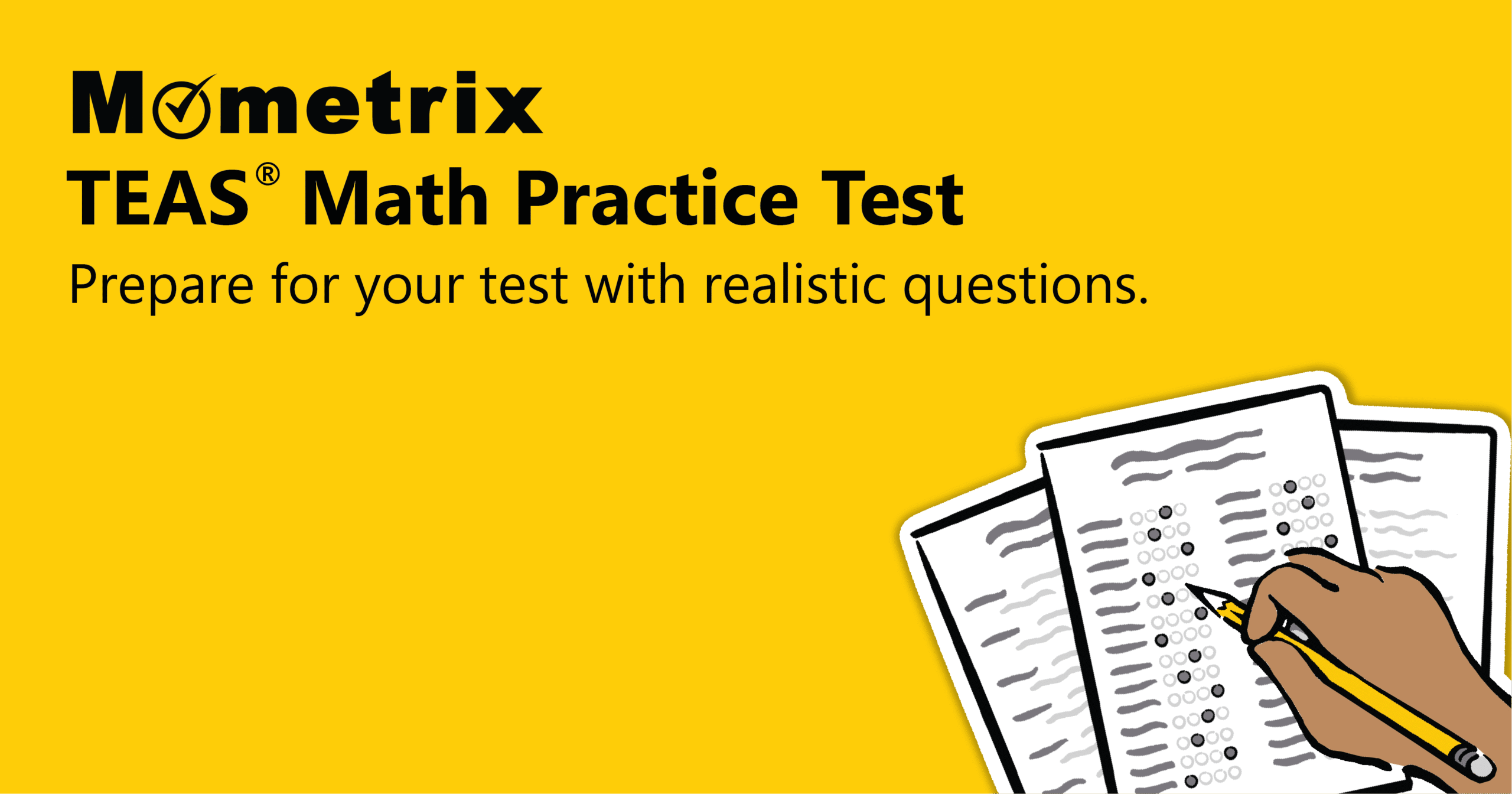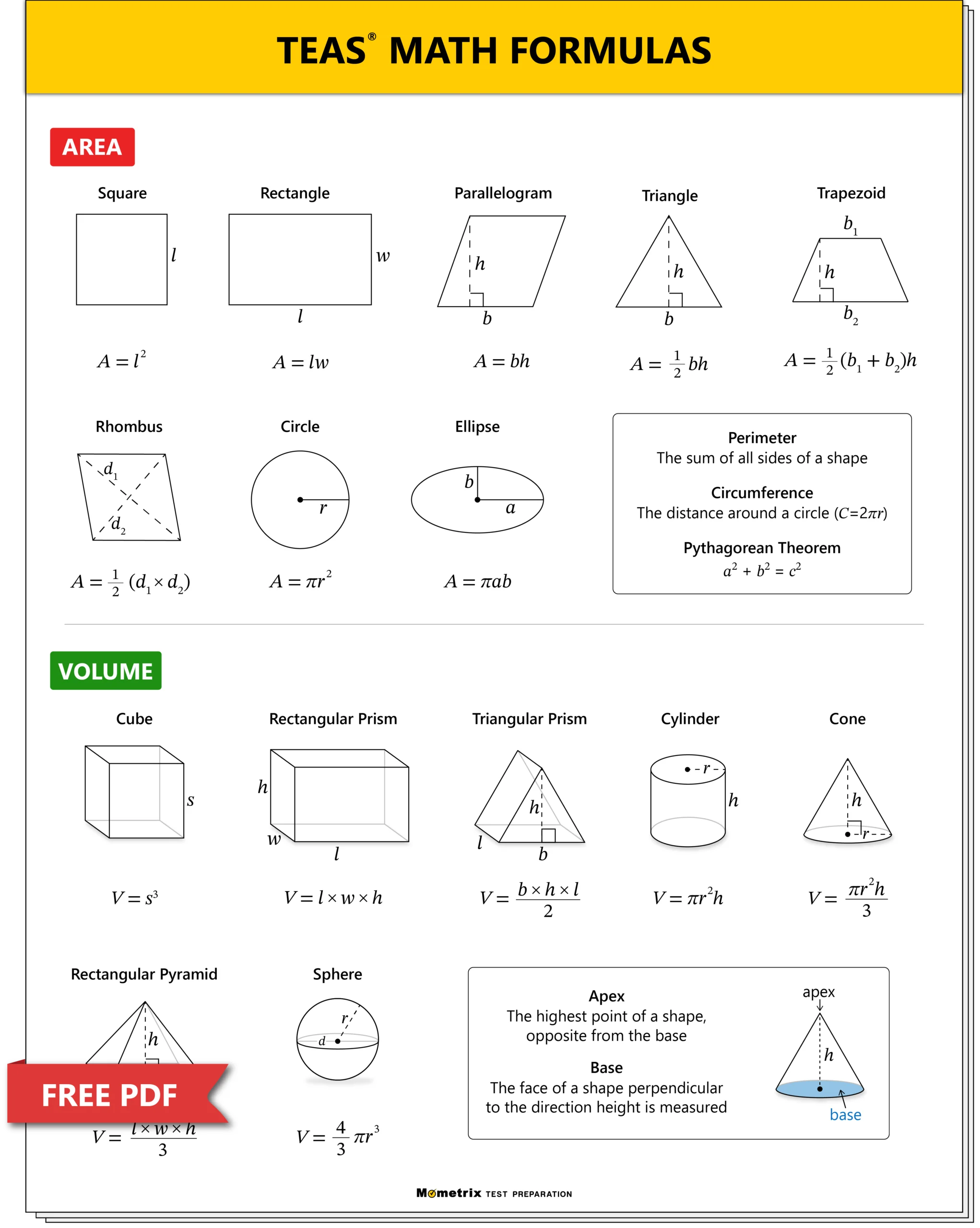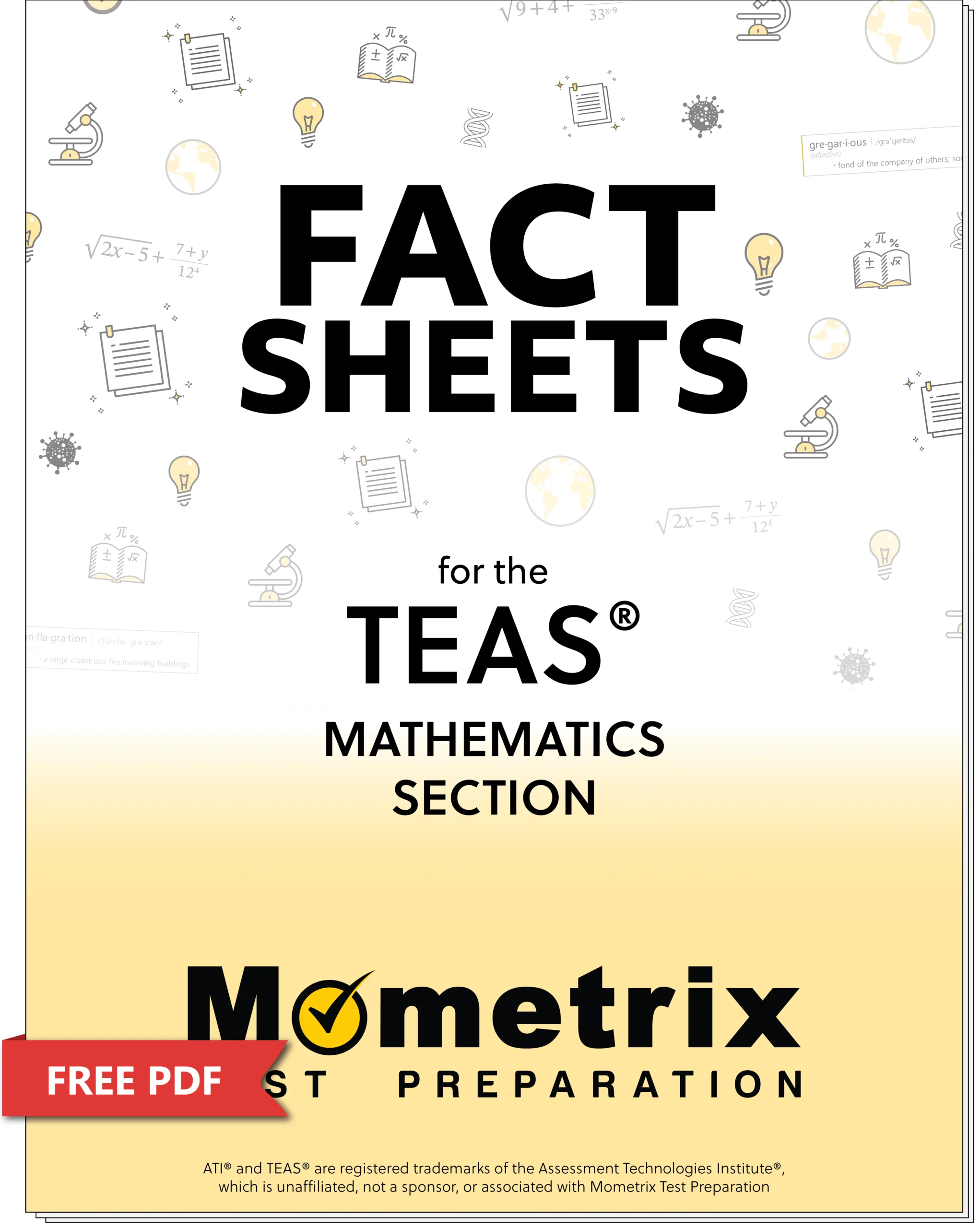The Math section of the TEAS® requires you to use algebra, numbers, measurements, and data to solve problems successfully. To help you prepare for this section of the TEAS, this page contains everything you need to know, including what topics are covered, how many questions there are, and how you can study effectively.
What’s on the TEAS Math Section?
TEAS Checklist
TEAS Online Course
If you want to be fully prepared, Mometrix offers an online TEAS prep course designed to give you everything you need to succeed!
Here’s what you’ll find in the TEAS course:
Everyone learns differently, so we’ve tailored the TEAS online prep course to ensure every learner has what they need to prepare for the TEAS 7 exam.
Click below to check it out!
Top 5 Most Challenging TEAS Math Questions
Over the last year, we’ve compiled the data from nearly 20,000 test-takers who tried their hand at the practice test at the top of this page. According to the data, around 70% of people answered these five questions incorrectly.
Answer each question and read through the answer explanation, whether you got the answer right or wrong. This will help you ensure you’ve got the topic mastered.
Whether you struggled with these questions or aced them on your first try, be sure to take the full practice test to get a better idea of how prepared you really are!
1. To protect a rectangular garden from animals eating the plants in it, a fence is to be built around it. The area of the garden is 616 ft2. If the width of the garden is 22 ft, what is the total length of fencing (in feet) that will be needed to fence in the garden? Round your answer to the nearest whole number.
2. A developer has a plan for a 75-home neighborhood, with each house having a lot size of 30 m × 20 m. If the streets between the houses will add at least 20% more area, which of the following commercial real estate listings would be the closest to the needed size? Note that a hectare (ha) is equivalent to 10,000 m2.
Now, since , the developer will need at least . This rules out Northampton and Essex. The plot in Southampton is and the area near Swindon is . Thus, the closest to the area needed is the one near Swindon (D).
3. Solve for .
Combine −2 and on the right-hand side of the inequality by using a common denominator of 4.
Subtract from both sides of the inequality.
Combine and by using a common denominator of 4.
Subtract 6t from both sides of the inequality.
Multiply both sides of the equation by to isolate . Don’t forget to flip the inequality sign whenever multiplying by a negative number.
4. A gym has designed a new weight-loss program for its members. Below is the graph of a frequency histogram showing the weight lost, in pounds, for a group of 75 gym members that are on the weight-loss program. The mean weight loss for the program is 20 pounds. Which of the following best describes how the weight lost is distributed?
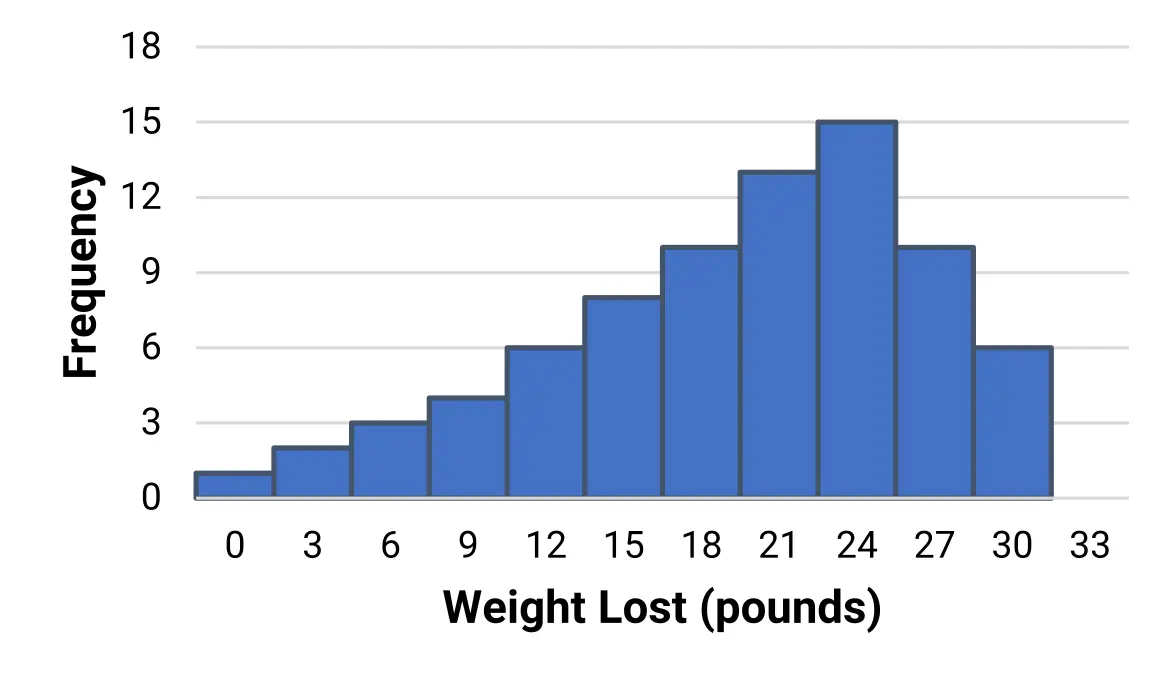
A histogram is said to be skewed left whenever the bars tend to have the greatest length to the right of its graph. Additionally, the mean for the set of data is to the left of the bar with the greatest length in the histogram.
We also refer to the histogram as having a negative skew, since the bars in the histogram tend to increase as weight lost increases, moving from the left to the right of the graph. This means there is an increasing number of gym members in the weight loss program that lose an increasing amount of weight.
5. The semester grade for your math class is determined by combining your test average, quiz average, and homework average. Your test average counts for 50 percent of your grade, your quiz average counts for 35 percent, and homework counts for the remaining 15 percent. If your test average for the semester is 78, your quiz average is 86, and your homework average is 92, what is your semester average to the nearest whole number?
Your semester average is broken into 3 categories having a total of . Find the percent of the score you will receive from each category, then combine them to find the semester grade. Recall that shifting the decimal point two places to the left will convert the percentages to a decimal.
To the nearest whole number, your semester average is .
TEAS Math Formulas
Though you will have access to a calculator during the exam, you won’t be given a formula sheet to reference. This means you’ll need to make sure you know your formulas by heart.
To help you out, we’ve compiled all of the formulas you need to know into one free PDF, including area and volume formulas, algebraic expressions, metric conversions, and more!

TEAS Math Fact Sheets
Sometimes, all you need is a quick review to brush up on the basics.
Check out our free TEAS Math fact sheets below to get a refresher on things like fractions, exponents, proportions, ratios, scientific notation, and more!
TEAS Math Example Problems
Here are three example questions from the TEAS Math exam, each with a simple explanation showing how the problem is solved.
1. Solve for \(x\): \(2x+4=x–6\)
To solve an equation with the variable on both sides of the equal sign, you must rearrange the terms. Specifically, use inverse operations of addition or multiplication to gather the variable terms to one side, and the constants to the other:
Therefore, the solution is \(x=-10\).
2. How many cubic inches of water could this aquarium hold if it were filled completely?
This question is asking for the volume of a rectangular aquarium with given dimensions of length, width and height. The formula to determine the volume is: \(V = l \cdot w \cdot h\)
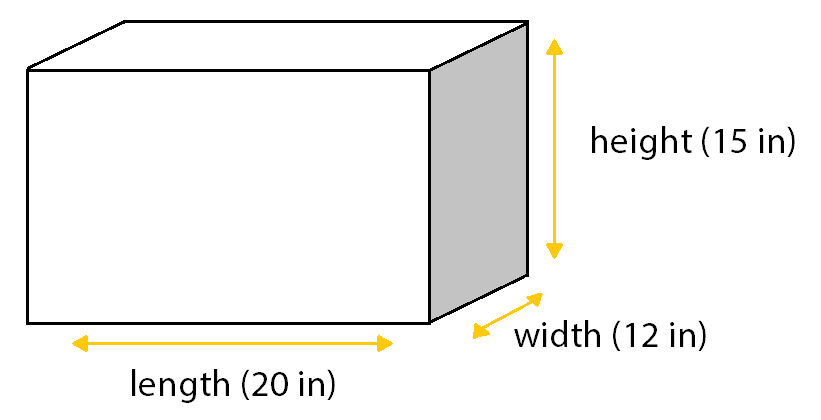
Substitute these dimensions into the formula:
\(V=(20)(12)(15)\)\(V=3,600\)
In context, this means that the aquarium shown will hold 3,600 cubic inches of water if it were filled completely.
3. Solve this word problem:
In real-life applications, there are often keywords that translate directly to a math operation. In this example, you need to determine the amount of blood that represents of 400 milliliters. The word of translates to multiply.
Determine the amount of blood used for other tests by multiplying the fraction by the amount of blood drawn:
\(400 \times \frac{1}{7} \Rightarrow \frac{400 \times 1}{7} \Rightarrow \frac{400}{7} \Rightarrow 57.14285714\) milliliters
Round this decimal to the nearest hundredth and interpret in context:
57.14 milliliters of blood were used for further testing.
FAQs
Q
Who takes the TEAS?
A
The TEAS is designed for students seeking admission into nursing or allied health programs. Many educational institutions require students to take the TEAS. Students are encouraged to learn more about their school’s score requirements.
Q
How many questions are on the TEAS Math exam?
A
The Math section of the TEAS contains 38 questions. This section includes four pretest questions that do not count toward your final score.
Q
How long is the TEAS Math exam?
A
Students have 57 minutes to complete the Math section, which has 38 questions.
Q
Can you use a calculator for the TEAS?
A
Yes. On test day, a test administrator will provide you with a four-function calculator (depending on the location). Calculators with built-in or specialized functions are not allowed.
Q
What is a passing TEAS Math score?
A
The nursing program of your choice determines the score requirements for TEAS. At the end of the exam, students will receive a “main” or total score that accumulates all four sections (Science, Math, Reading, and English & Language Usage). Students will also receive separate scores for each section. Many nursing programs require students to earn a total score of at least 60% – 70%. Students are encouraged to score higher than the program’s minimum score requirement to increase their chances of admission.
ATI® and TEAS® are registered trademarks of the Assessment Technologies Institute®, which is unaffiliated, not a sponsor, or associated with Mometrix Test Preparation.
